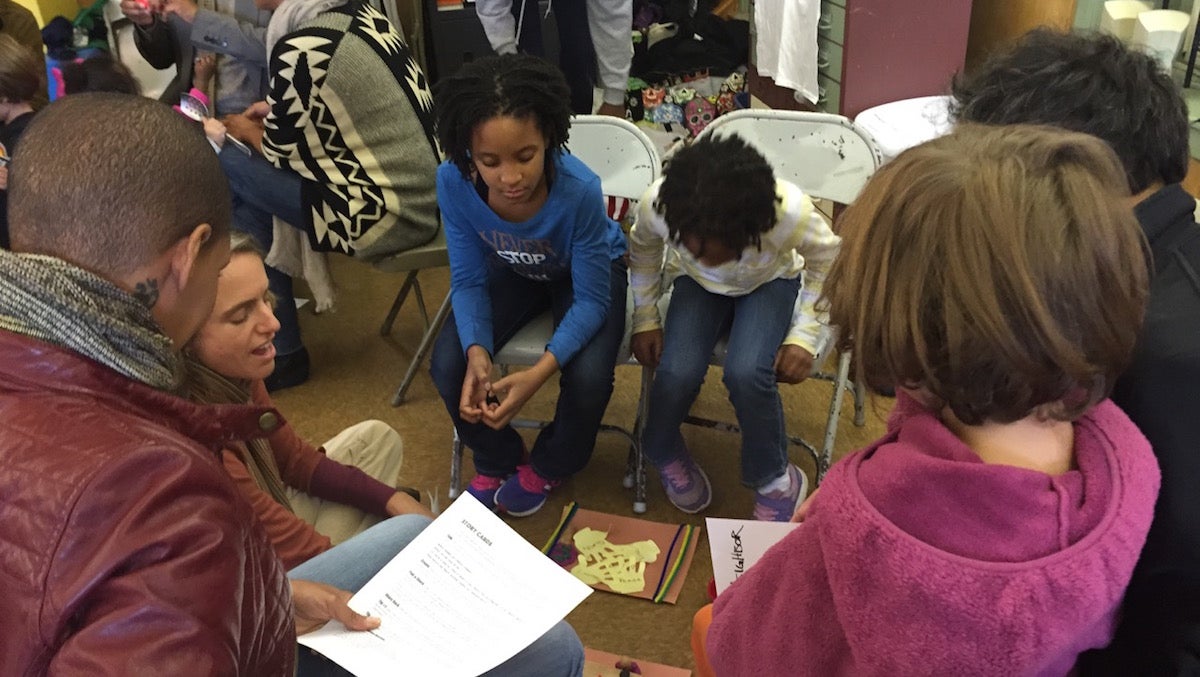The important work of ‘Black Lives Matter’ in our own neighborhoods

The Diggs and Solomon families share stories at a community gathering. (Courtesy of Jen Bradley)
If your family has walked or driven through certain parts of Northwest Philadelphia lately, you might have seen signs supporting the Black Lives Matter movement. This might not seem necessary in a community like Mt. Airy, which prides itself on being a welcoming and multiracial community.
Mt. Airy is indeed such a community, with people of many races, ethnicities, and walks of life living side-by-side in one zip code. But whether you’re in Germantown, Chestnut Hill, or Mt. Airy, the truth is, we still have race work to do right here in our community.
As a mom, I wanted to find ways for my family and my children, to respond, rise up, and be part of the change.
But after attending a nighttime march downtown with my kids in tow, it became clear to me that not all marches are kid-friendly. After talking with some other like-minded parents who also wanted opportunities to speak out, the idea of the Philly Children’s March was born.
Our first Philly Children’s March had us marching through the streets of Mt. Airy on a cold, wet, blustery day in January, with horns honking and children chanting, “Black Lives Matter, Love and Justice!” Since then, we’ve continued to march, held house meetings, playgroups, community gatherings, attended book and gallery events, and more. In short, the Philly Children’s March is building a community of families who see color, question privilege, and rise up for racial justice.
Most of the names we speak and the work we do at the marches have been connected to tragic national stories. They did not happen in our zip codes, yet during the past month, we’ve been reminded of the work there is to do right here in our own backyard.
Within the last month, we’ve had a father in our group detained and racially profiled in a local store and three vandalizing incidents at homes in Mt. Airy and Chestnut Hill whose lawns carry Black Lives Matter signs. One family received a scathing anonymous letter, another had their sign trampled, and a third family had a toxic chemical thrown on their sign.
Families in the group responded to the racial profiling incident by talking with their children and asking what, if anything, children wanted to do about it. When Tia Mathisen shared the story with her five-year-old daughter, Reece, she wanted to go in and talk to the people at the store.
“I suggested we take a letter or picture that she drew, but she asked if she could go and tell them. This was her protest, and I didn’t want to make her feel she needed to hide,” said Mathisen.
Just one month after starting kindergarten, Reece stood up and told the store manager that she felt the way he had been treated in their store was wrong.
Talking with children about sign vandalization is more difficult. While the signs proclaim the rally cry of the movement, it is still lawn signs. Ultimately though, it’s not about the signs, it’s about what the signs support.
Do we have work to do, right here in our community? Yes, we do. But even with children as young as 15 months old, we’re beginning to address it.
For more information on the mission and community of the Philly Children’s March, please visit our website or our Facebook page.
WHYY is your source for fact-based, in-depth journalism and information. As a nonprofit organization, we rely on financial support from readers like you. Please give today.

